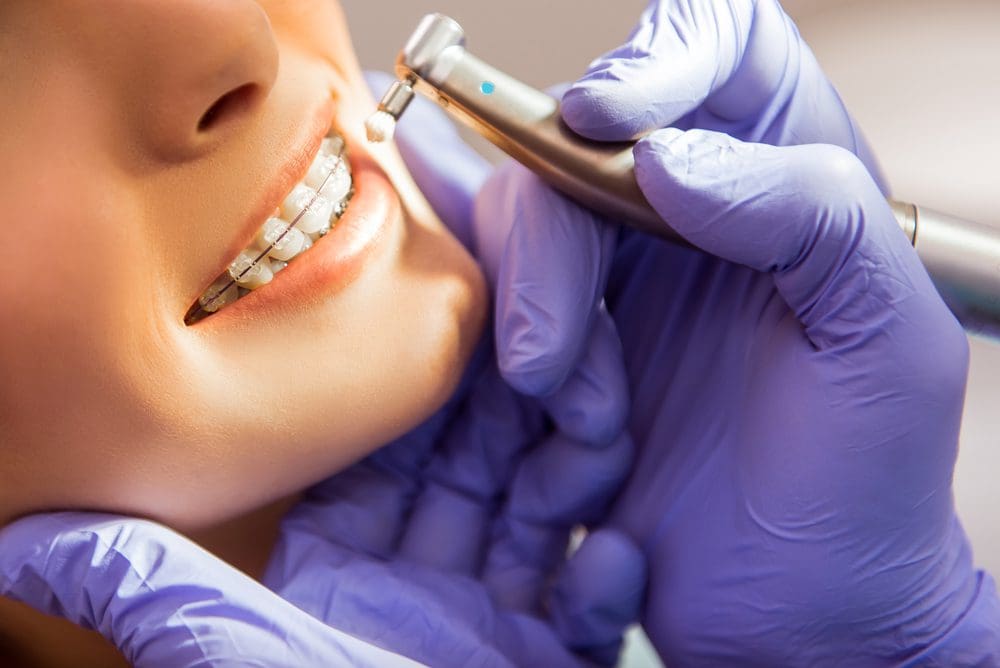Comprehensive Overview to Orthodontics Treatments for Fixing Oral Misalignments
In the world of orthodontics, the journey to accomplishing a perfectly straightened smile entails a myriad of treatments tailored to correct dental misalignments. From traditional dental braces to undetectable aligners and even surgical alternatives, the field of orthodontics offers a variety of options to deal with differing levels of dental abnormalities. Comprehending the intricacies of each treatment, including their systems, benefits, and possible disadvantages, is important in making informed choices regarding one's orthodontic treatment. As we navigate with the extensive guide to orthodontic treatments for remedying dental imbalances, the detailed information of each technique will certainly unfold, losing light on the path towards a practical and unified dental placement.
Orthodontic Procedures Introduction

Regular adjustments and tracking are vital components of orthodontic therapy to make certain progression is on track and to make any kind of needed adjustments along the method. By going through orthodontic procedures, clients can not only attain a straighter grin however additionally improve their overall dental health and wellness and feature.
Typical Braces: Just How They Work
When thinking about orthodontic therapies for oral misalignments, traditional braces stick out as a reliable method for fixing teeth positioning. Standard dental braces are composed of braces, cords, and bands that interact to apply continuous pressure on the teeth, slowly moving them into the preferred positioning. The braces are connected to the teeth making use of an unique adhesive, and the wires are threaded with the braces. By adjusting the stress of the cables, orthodontists can manage the direction and pressure applied to each tooth, guiding them right into correct positioning gradually.
One secret aspect of just how traditional dental braces work is the process of bone makeover. As pressure is used to the teeth through the braces, the bone surrounding the teeth is reshaped to sustain the new tooth positions. This renovation is necessary for the lasting security of the remedied placement. Patients will certainly require normal adjustments at the orthodontist's office to guarantee the dental braces proceed to use the appropriate stress for reliable teeth activity.
Undetectable Aligners: Benefits And Drawbacks
These clear, personalized trays are virtually unnoticeable when used, making them an enticing alternative for individuals seeking a much more visually pleasing orthodontic therapy. People can get rid of the aligners prior to consuming or brushing their teeth, reducing the risk of food obtaining stuck in the appliance and simplifying the cleansing process.

Surgical Orthodontic Options
Surgical treatments in orthodontics existing practical choices for dealing with complex oral misalignments that might not be successfully solved with conventional orthodontic therapies. While undetectable aligners and standard dental braces can remedy numerous orthodontic issues, particular instances need surgical treatment to accomplish optimal outcomes. Surgical orthodontic choices are generally advised for extreme malocclusions, substantial jaw disparities, and instances where the underlying bone structure needs alteration to achieve appropriate placement.
One typical medical orthodontic treatment is orthognathic surgery, which includes rearranging the jaws to deal with functional issues such as problem speaking or chewing. This surgical treatment is usually performed in partnership with an orthodontist that helps straighten the teeth before and after the procedure. Surgical orthodontics might also involve treatments to expose impacted teeth, get rid of excess gum cells, or improve the jawbone to develop a more unified face profile.
Before taking into consideration surgical orthodontic choices, individuals undergo a detailed assessment to establish the need and prospective benefits of such interventions. aligners. While surgical procedure may appear daunting, it can dramatically enhance both the feature and visual appeals of the smile in instances where standard orthodontic treatments fall short
Retainers and Post-Treatment Treatment

Failure to comply with post-treatment treatment directions can result in relapse, where the teeth gradually move back towards their initial settings. Regular retainer wear, good dental hygiene, and normal dental check-ups are important for keeping the outcomes achieved through orthodontic surgical treatment and ensuring the long-term security of the fixed oral positioning.
Verdict
Finally, orthodontic procedures use different alternatives for dealing with dental imbalances. Conventional dental braces make use of steel braces and wires to move teeth into proper placement. Unnoticeable aligners give a more very discreet alternative however might not be suitable for all cases. Surgical orthodontic options are readily available for a lot more extreme imbalances. Retainers are frequently made use of post-treatment to keep the new alignment. Overall, orthodontic procedures can successfully Read More Here enhance oral health and aesthetic appearance.
As we browse via the comprehensive guide to orthodontic procedures for remedying dental misalignments, the intricate details of each method will certainly unfold, dropping light on the path towards a practical and unified dental positioning. - cumming orthodontist
One of the most common orthodontic therapies is the usage of dental braces, which are composed of metal braces and wires basics that use mild pressure to slowly shift teeth into the desired position.When taking into consideration orthodontic treatments for dental misalignments, typical braces stand out as a reliable approach for correcting teeth positioning. Furthermore, invisible aligners might not be ideal for intricate orthodontic problems that need more significant teeth activity, as they are commonly recommended for moderate to have a peek at these guys moderate situations. Retainers are tailor-made orthodontic devices designed to hold teeth in their corrected placements after the completion of orthodontic therapy.